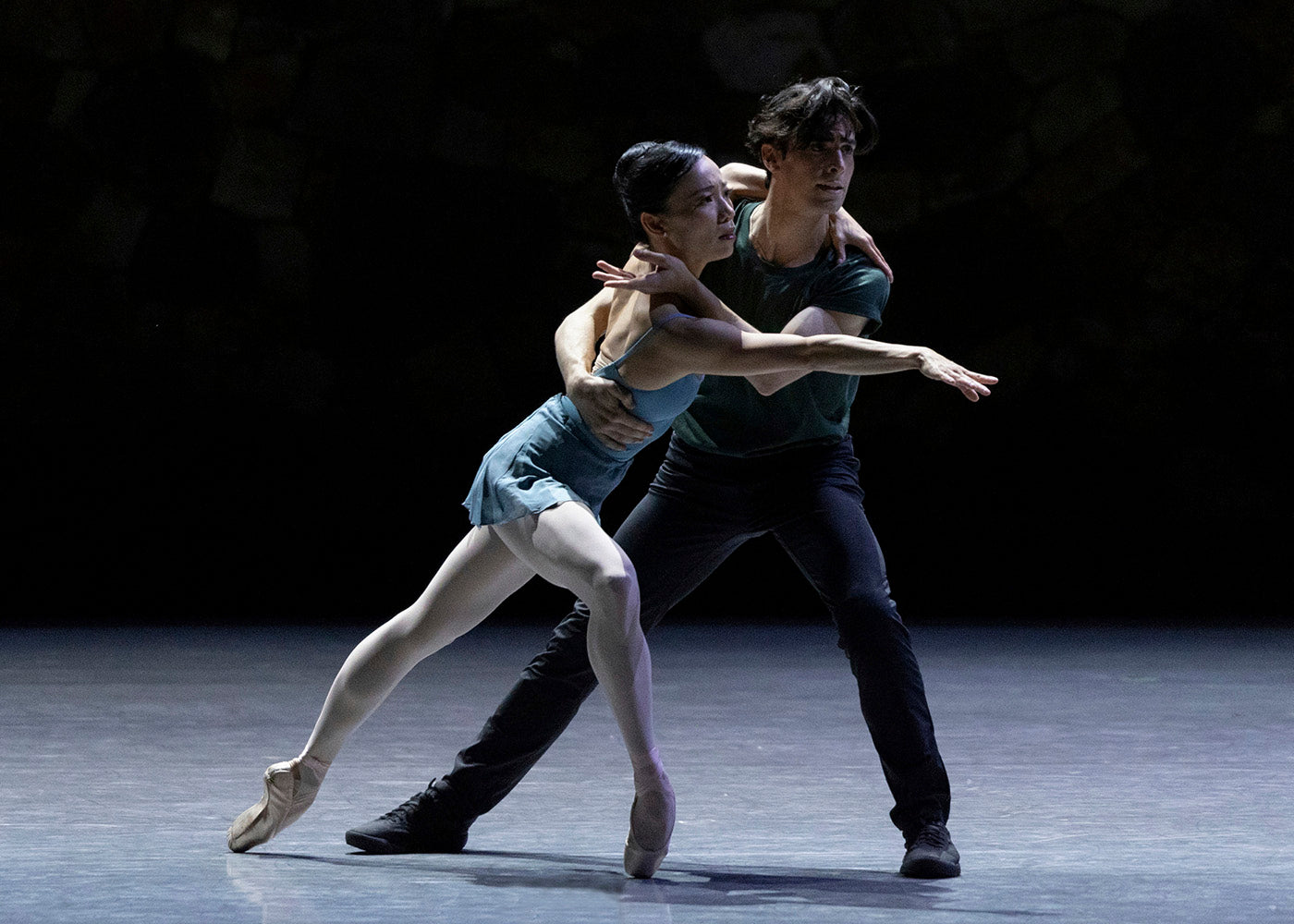Dance Floor Liberation
Los Angeles–based dance artist Jay Carlon knew that the proscenium stage couldn’t house his 2024 work, “Wake,” in its fullness. So he moved it elsewhere: to a rave.
Plus
World-class review of ballet and dance.
Los Angeles–based dance artist Jay Carlon knew that the proscenium stage couldn’t house his 2024 work, “Wake,” in its fullness. So he moved it elsewhere: to a rave.
PlusChoreography wasn’t on Lia Cirio’s radar when artistic director Mikko Nissinen asked her to participate in Boston Ballet’s ChoreograpHER initiative in 2018.
PlusIngrid Silva’s expression is calm, the side of her mouth upturned a few degrees, as if she’s delighting in the reception of her own joke.
PlusFrench choreographer Lea Tirabasso makes dense, intricate work which explores existential concerns connected with science, nature and morality. Witty, vivid and visceral, her work pushes beyond simple genres or choreographic language, creating something far richer and more complex. Her most recent piece, “In the Bushes” is part of the Edinburgh Festival this year. Fjord Review caught up with Léa Tirabasso ahead of the Summerhall run.
PlusWhy Not Theatre’s bold, multidisciplinary adaptation of the Mahabharata drew a rapt audience at Lincoln Center’s vibrant summer arts festival “Summer for the City.”
PlusStephen Petronio has an odd way of celebrating his 40th anniversary. He and his board have decided this season will be the company’s last.
PlusWashington, D.C.’s 100° June weather wasn’t the only thing generating heat in the city. Chamber Dance Project’s 11th annual D.C. summer season production, “Red Angels,” produced its own scorching intensity as one of this summer’s early triumphs.
PlusA ballet body is essentially a deformed body. The older and more experienced the dancer, the more evident–and beautiful–this deformation is.
PlusAfter a successful dancing career with, among others, Dutch National Ballet, Finnish National Ballet, and finally San Francisco Ballet, where he was a principal dancer for a decade, Mikko Nissinen has proven himself a strategic, forward-looking and beloved artistic director of Boston Ballet.
FREE ARTICLETo celebrate its 85th anniversary, the American Ballet Theatre filled its summer season with exciting debuts.
PlusThe world-renowned Czech choreographer and multimedia artist Jiří Kylián was recently honored with a retrospective festival at the Oslo opera house.
PlusUntil March 2022, Olga Smirnova was one of the top dancers at the Bolshoi, performing roles in a large swathe of the repertory, everything from Odette in “Swan Lake” to Marguerite Gauthier in John Neumeier’s “Lady of the Camellias” and Bianca in Jean-Christophe Maillot’s “Taming of the Shrew.”
PlusWatching Matthew Bourne's reworked version of the “star-cross'd lovers,” I was briefly reminded of Veronica, played by Winona Ryder, in the dark 1988 comedy by Daniel Waters and Michael Lehmann, Heathers, and her line, “my teen angst bullshit has a body count.” Yes, this is the darker side of Bourne's repertoire,...
PlusThe choreographer Alexei Ratmansky reflects on the war in Ukraine, the connection between geopolitics and ballet, and joining the house of Balanchine.
Plus
Beneath blue California skies, manicured trees, and the occasional hum of an overhead airplane, Tamara Rojo took the Frost Amphitheater stage at Stanford University to introduce herself as the new artistic director of San Francisco Ballet.
PlusAfter a week of the well-balanced meal that is “Jewels”—the nutritive, potentially tedious, leafy greens of “Emeralds,” the gamy, carnivorous “Rubies,” and the decadent, shiny white mountains of meringue in “Diamonds”—the New York City Ballet continued its 75th Anniversary All-Balanchine Fall Season with rather more dyspeptic fare.
PlusAn “Ajiaco” is a type of soup common to Colombia, Cuba, and Peru that combines a variety of different vegetables, spices, and meats.
Plus